
01
LAN (Local Area Network)
Typically refers to a collection of computers, printers, modems, or other devices that can interconnect within a few kilometers using some medium.
02
MAN (Metropolitan Area Network)
MAN covers a medium scale, lying between a LAN and a WAN, usually network connections within a city (approximately 10KM).
03
WAN (Wide Area Network)
Distributed over long distances, it provides access across larger geographical areas through various types of serial connections.
Whether engaged in the network engineering industry or any other field, learning must start from the basics and progress step by step. Without a solid foundation, it is impossible to master and apply deeper theories or technologies.



Systematic learning with consulting course advisors
04
Sneakernet
Sneakernet is considered one of the earliest forms of networking, where data is physically transported using removable media (like disks or tapes).
05
Point-to-Point Link
This refers to a direct connection between two computers on a network. Aside from connecting the cables to the NIC cards of the two computers, no other network devices are required for point-to-point connections.
06
Anonymous FTP
Anonymous FTP is a method that grants users access to files on public servers. Users who are allowed access to data on these servers do not need to identify themselves but log in as anonymous guests.
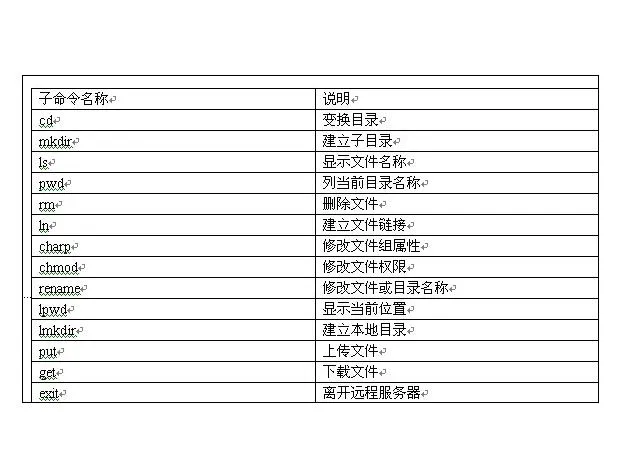
07
Data Encapsulation
Data encapsulation is the process of breaking down information into smaller, manageable chunks before it is transmitted over the network. In this process, source and destination addresses are attached to the header along with parity.
08
Network Topology
Network topology refers to the layout of a computer network. It shows the physical layout of devices and cables and how they are connected to each other.
09
Access List
An access list is a set of rules that manage the control of data packets entering and exiting a router. It is not generated by the router itself; the access list can allow or deny packets from entering or exiting to their destinations. Each interface can only have one access list per protocol.
10
Autonomous System (AS)
An autonomous system is a group of routers and networks under the control of a single administrative entity. It can be a router directly connected to a LAN while also connected to the Internet; it can be multiple LANs interconnected by an enterprise backbone.
All routers within an autonomous system must be interconnected, run the same routing protocol, and be assigned the same autonomous system number. Links between autonomous systems use external routing protocols such as BGP.
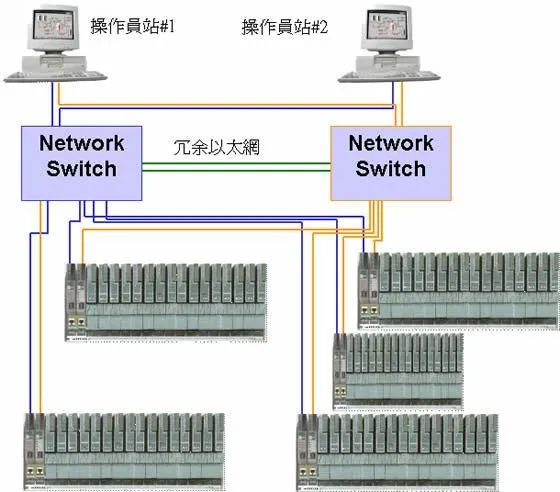
11
BGP
BGP (Border Gateway Protocol) is a routing protocol used for dynamically exchanging routing information between autonomous systems. A classic definition of an autonomous system is a group of routers under the control of a single administrative entity that forwards messages to other autonomous systems using IGP and common metrics.
The term autonomous system in BGP emphasizes the fact that management of an autonomous system provides a unified internal routing plan for other autonomous systems, offering a consistent description of the networks reachable through it.
12
NOS
NOS, or Network Operating System, is specialized software whose main task is to provide network connectivity to computers to enable communication with other computers and connected devices.
13
SLIP
SLIP, or Serial Line Internet Protocol, is an older protocol developed in the early days of UNIX. It is one of the protocols used for remote access.
14
ICMP
ICMP is the Internet Control Message Protocol. It provides messaging and communication for protocols within the TCP/IP protocol stack. It is also the protocol that manages error messages used by network tools such as PING.
15
ipconfig
Ipconfig is a utility commonly used to identify the address information of computers on a network. It can display both physical and IP addresses.
16
Tunnel Mode
This is a mode of data exchange where the two communicating computers do not use IPSec themselves. Instead, the gateway connecting the LAN to the transit network creates a virtual tunnel that uses the IPSec protocol to protect all communications passing through it.
17
RSA Algorithm
RSA stands for Rivest-Shamir-Adleman algorithm. It is currently the most widely used public-key encryption algorithm.

18
Multicast Routing
Multicast routing is a targeted form of broadcasting that sends messages to selected user groups instead of broadcasting them to all users on a subnet.
19
Horizontal Fragmentation
Horizontal fragmentation is a technique to avoid routing loops and speed up route convergence. Due to routers possibly receiving routing information they sent themselves, which is useless, the horizontal fragmentation technique does not announce any routing update information received from terminals that would clear due to counting to infinity but only announces those routes that will not.
20
Metric
Metrics represent distance. They are used to determine the optimal route when searching for routes. Each routing algorithm generates a value (metric) for each path through the network when producing the routing table, with the smallest value indicating the optimal path. The calculation of metrics can consider only one attribute of the path, but more complex metrics are derived from multiple attributes of the path.#Network Engineer Club
21
Administrative Distance
Administrative distance refers to the trustworthiness of routing information received from a routing protocol. Each routing protocol is assigned a trust level from high to low based on reliability, known as administrative distance. For routing information from two different routing protocols to a destination, the router first decides which protocol to trust based on administrative distance.
22
Distance Vector Routing Protocol
Distance vector routing protocols are designed for small network environments. In large network environments, these protocols can generate significant traffic while learning and maintaining routes, consuming excessive bandwidth.
Distance vector routing protocols use hop count as the metric to calculate the number of routers to reach the destination. For example, RIP uses the Bellman-Ford algorithm to determine the shortest path, which is the route that can reach the destination with the least number of hops. The maximum allowed hop count is usually set to 15. Terminals that must pass more than 15 routers are considered unreachable.
Distance vector routing protocols include: IP RIP, IPX RIP, Apple Talk RTMP, and IGRP.
23
SD-WAN
SD-WAN, or Software-Defined Wide Area Network, is a service that applies SDN technology to wide area network scenarios, used to connect enterprise networks, data centers, Internet applications, and cloud services over large geographical areas. This service is characterized by “cloudifying” network control capabilities through software, supporting application-aware network capabilities.
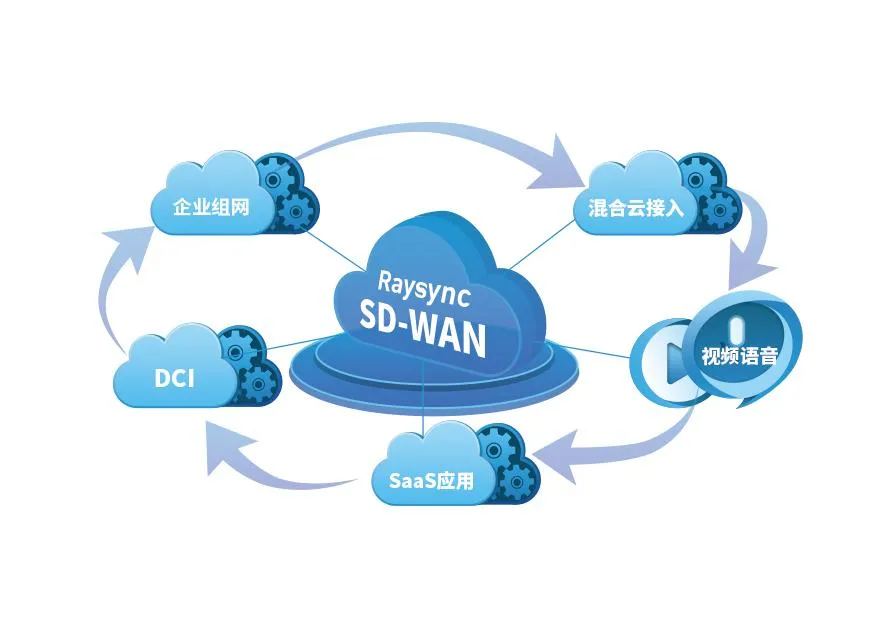
24
DNS
DNS stands for Domain Name System, a distributed database on the Internet that maps domain names to IP addresses, making it easier for users to access the Internet without remembering machine-readable IP addresses.
DNS is also a vital component of many unified network security architectures and a key component of public and private clouds, meaning network engineers need a good understanding of how DNS works to better troubleshoot network issues.
25
IoT
The Internet of Things (IoT) is a network that connects all ordinary objects capable of independent functions through the Internet and traditional telecom networks. Its application areas mainly include transportation and logistics, industrial manufacturing, healthcare, smart environments (home, office, factory), etc., with a vast market potential.
Network engineers not only need to scale wired and wireless networks for IoT to accommodate thousands or tens of thousands of IoT sensors but also need to ensure security after devices connect to the enterprise network.
26
Hyper-Converged Systems
Hyper-convergence integrates computing, data storage, and networking functions into a unified system. Network engineers need to understand the management tools used to deploy and operate hyper-converged systems and how these systems work from one end of the technology stack to the other to optimize applications running on them.
27
EGP
EGP stands for Exterior Gateway Protocol, which is used for inter-domain routing. It is the routing protocol used by routers between different autonomous systems to exchange routing information.
28
FDM
FDM, or Frequency Division Multiplexing, is a multiplexing technology that modulates multiple baseband signals onto different frequency carriers and then overlays them to form a composite signal.#Network Engineer Club
29
FTP
FTP, or File Transfer Protocol, allows the transfer of files between any computers on heterogeneous networks. It provides interactive access, allowing clients to specify file types and formats, and allows files to have access permissions.
Functions provided:
File transfer capability between different types of host systems
Providing users with file management capabilities on remote FTP servers according to user permissions
Providing public file sharing capabilities through anonymous FTP
C/S working mode, FTP consists of a main process and several subordinate processes
Control connection (port 21) and data connection (port 20)
30
HDLC
HDLC, or High-Level Data Link Control, is a set of protocols used for transmitting data between network nodes. It is bit-oriented, full-duplex communication with high data link transmission efficiency. All frames use CRC checking, sequential numbering, and reliable transmission. Transmission control and processing functions are separated, providing greater flexibility.#Network Engineer Club
Basic configuration:
Balanced configuration: a primary station controls the entire link
Unbalanced configuration: both stations are compound stations, equally initiating data transmission
Stations: primary station, secondary station, compound station
31
HTML
HTML, or HyperText Markup Language, is a markup language for document structure that describes various information and formats on a page using certain conventions.
32
HTTP
HTTP, or HyperText Transfer Protocol, is the protocol that must be strictly followed for interactions between web clients and web server programs to achieve various links on the World Wide Web. HTTP is an application layer protocol that uses TCP connections for reliable transmission.
33
ICMP
ICMP, or Internet Control Message Protocol, allows hosts or routers to report error conditions and provide reports on whether there are abnormal situations, and is a protocol at the IP layer.
Message types: ICMP error messages, ICMP inquiry messages
Two common applications:
PING (operating at the application layer, directly using ICMP)
Traceroute, tracert (operating at the network layer)
34
IEEE
IEEE, or the Institute of Electrical and Electronics Engineers, is the world’s largest professional technical organization dedicated to the development and research of electrical, electronic, computer engineering, and related fields.
35
IGMP
IGMP, or Internet Group Management Protocol, is a multicast protocol. It is a protocol used for Internet multicast to exchange information about group members.
36
IGP
IGP stands for Interior Gateway Protocol (intra-domain routing). It is the routing protocol used within an autonomous system. Examples include RIP and OSPF.
37
ARP
ARP, or Address Resolution Protocol, can resolve IP addresses into hardware addresses, solving the mapping issue between IP addresses and hardware addresses for hosts or routers on the same LAN.
38
ARQ (Automatic Repeat reQuest)
The sender appends a certain CRC redundancy check code to the data frame to be sent and sends it. The receiver checks the data frame for errors based on the check code, discards it if an error is found, and the sender retransmits the data frame after a timeout.
39
AS
AS stands for Autonomous System, which refers to a group of routers and networks under the control of a single administrative entity. It uses OSPF and RIP internally and BGP externally.
40
BGP
BGP, or Border Gateway Protocol, is the protocol for exchanging routing information between routers of different autonomous systems. It is an exterior gateway protocol, a path vector routing protocol, and an application layer protocol based on TCP.
BGP usage environment:
-
The Internet is too large, making routing between autonomous systems difficult.
-
Routing between autonomous systems to find the best route is not practical.
-
Routing between autonomous systems must consider relevant policies.
-
Efforts are made to find a route that can reach the target network and is relatively good.
Working principle:
Each autonomous system selects one (or more) routers as the “BGP speaker” for that autonomous system. The speakers exchange information with each other, first establishing a TCP connection. BGP supports CIDR.
41
CDM (Code Division Multiplexing)
CDM is a form of multiplexing where a set of mutually orthogonal codewords carries multiple signals. For example, it can be understood as a vehicle carrying green beans from station A and another vehicle carrying yellow beans from station B, merging during transmission and separating at the destination.
42
CDMA (Code Division Multiple Access)
CDMA is a technology that distinguishes base stations using different pseudorandom codes, allowing multiple base stations to use the same frequency and transmit information simultaneously.
43
CIDR
CIDR, or Classless Inter-Domain Routing, is a method of dividing IP addresses based on variable-length subnet masks to eliminate traditional class A, B, and C network divisions, allowing for supernet (route aggregation) construction with software support.
44
CRC
CRC, or Cyclic Redundancy Check, is the most commonly used error-checking code. In the ARQ method, the sender appends a certain CRC redundancy check code to the data frame to be sent, and the receiver checks for errors based on the check code, discarding erroneous frames and retransmitting after a timeout.
45
CSMA/CD
CSMA/CD, or Carrier Sense Multiple Access with Collision Detection, is an improvement on CSMA, applicable to bus-type networks, used in wired LANs. It always sends in broadcast mode, listening before transmitting, and uses binary exponential backoff to manage collisions.#Network Engineer Club
46
CSMA/CA
CSMA/CA, or Carrier Sense Multiple Access with Collision Avoidance, is a protocol that broadcasts to inform other nodes to refrain from sending data for a certain period. It is applicable to wireless LANs, using a binary exponential backoff algorithm.
Why this protocol is necessary: The cost of hardware for collision detection in wireless media is prohibitively high; “hidden stations”.
Implementation methods:
Channel reservation: How long do I need to use it?
ACK: Send me a reply when you receive it.
RTS/CTS frames: “hidden stations”.
47
P2P (Peer-to-Peer Network)
P2P is a distributed application architecture that allocates tasks and workloads among peers, forming a network model at the application layer. Participants in this network share part of their hardware resources (processing power, storage capacity, network connectivity, printers, etc.), which can be directly accessed by other peers without passing through intermediaries.
In this network, participants are both providers of resources, services, and content (servers) and consumers of resources, services, and content.
48
PAN
PAN stands for Personal Area Network, with a radius of 10m.
49
PDU
PDU stands for Protocol Data Unit. It is the unit of data transmitted between peer layers, including SDU (Service Data Unit) and PCI (Protocol Control Information).
50
POP
POP, or Post Office Protocol, is a protocol where the user agent requests the mail server to “pull” emails from the user’s mailbox. It operates in a C/S model using TCP connection (port 110).
51
PPP (Point-to-Point Protocol)
PPP is a byte-oriented protocol for serial line communication, establishing point-to-point connections through dial-up or dedicated lines, encapsulating IP datagrams for transmission over serial links.


Course advisors
Why Choose Sanwang Education
01
Deep Training Background
Sanwang Education was founded in 2006 and has cultivated over 10,000 high-end IT talents in Suzhou and surrounding cities over 18 years, with students spread across various domestic and foreign enterprises in Suzhou, as well as in the USA, Canada, Japan, New Zealand, South Korea, Singapore, and Hong Kong and Macau. Sanwang’s client base covers industries such as government, finance and securities, foreign enterprises, large state-owned enterprises, and universities.
02
Professional IT Certification Training Exam Center
Sanwang Education is an authorized training center for multiple original manufacturers. Currently, we provide training services in Huawei, Cisco, Red Hat, Oracle, Microsoft, VMware, IT project management, cloud computing, and other technical fields, and we are also authorized testing centers for PROMETRIC and ATAC.
03
Strong Faculty
Sanwang partners with top technology vendors, signing multiple senior technical experts to provide professional IT certification courses. We have HCIE/CCIE/RHCA/OCM instructors with rich project experience and teaching experience, dedicated to helping students and enterprises effectively enhance their competitiveness.
04
Common Choice of Many Valuable Clients
Clients include China Post, China Telecom, China Mobile Suzhou R&D Center, Huayan Water Affairs, Bosch Automotive, Yihua Transportation, Suzhou Seismological Research Institute, Shanshi Network Science, Fujitsu, Jiangsu Tianchuang, and Inner Mongolia Shenhua Group, among others.
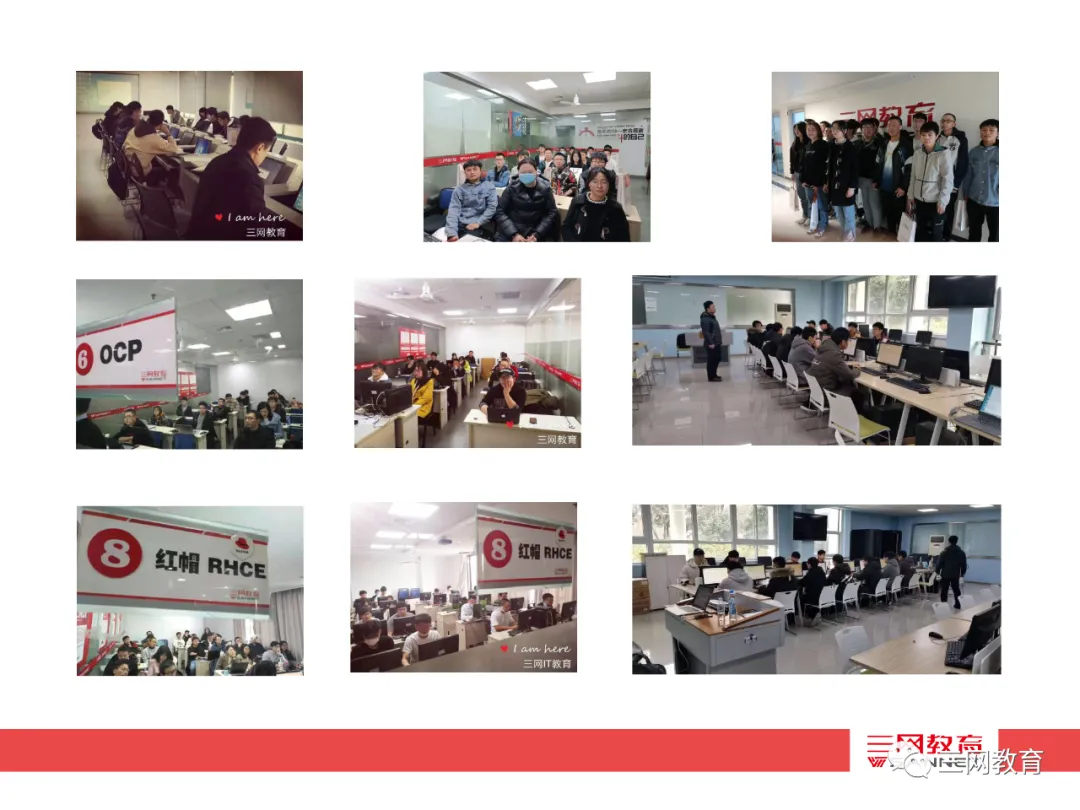

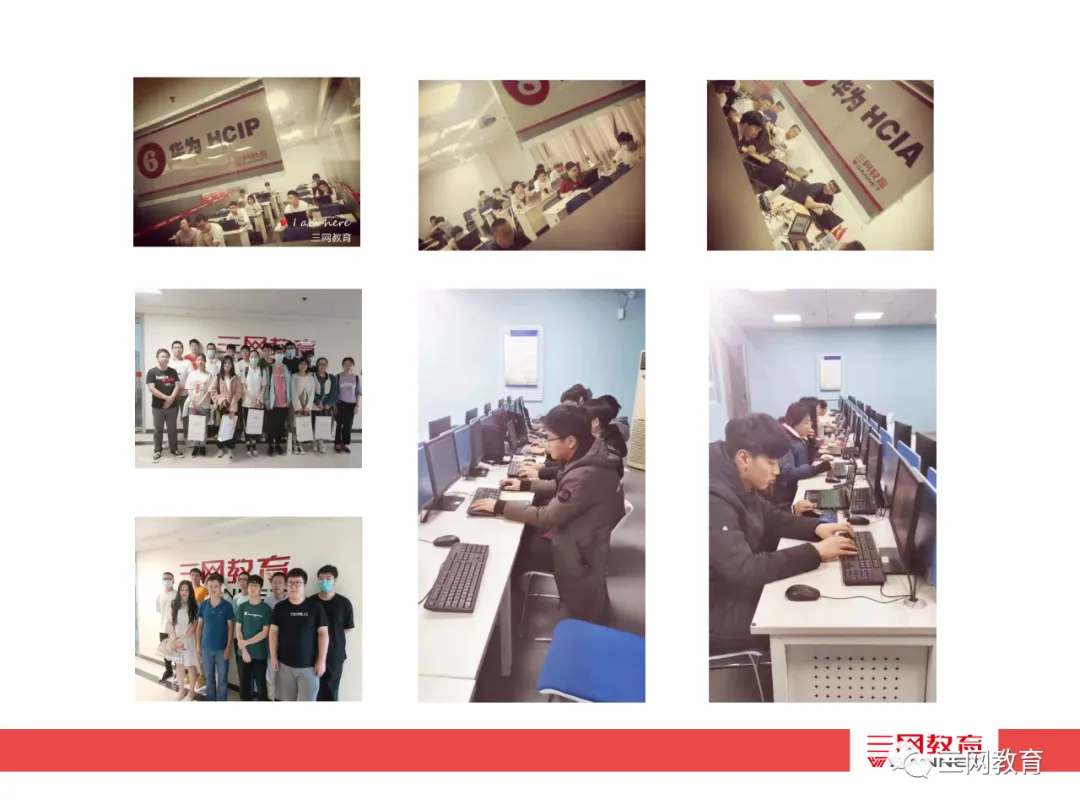

– END –

///
Professional • Strength • Integrity • Value

WeChat ID:hcie1024
Official Website:www.sannet.net
Consultation Hotline:17365375526
Consultation Phone:0512-82289966
Address:68 Nantiangcheng Road, Xiangcheng District, Suzhou
